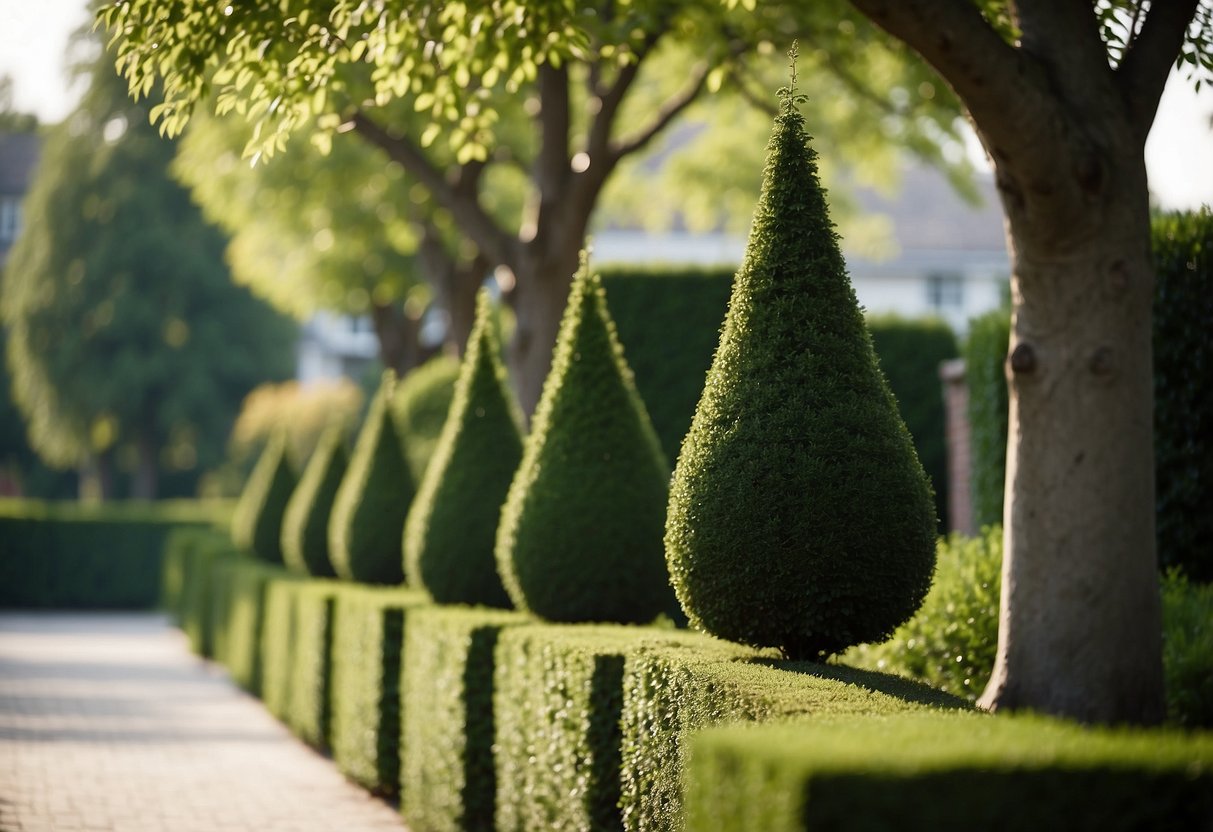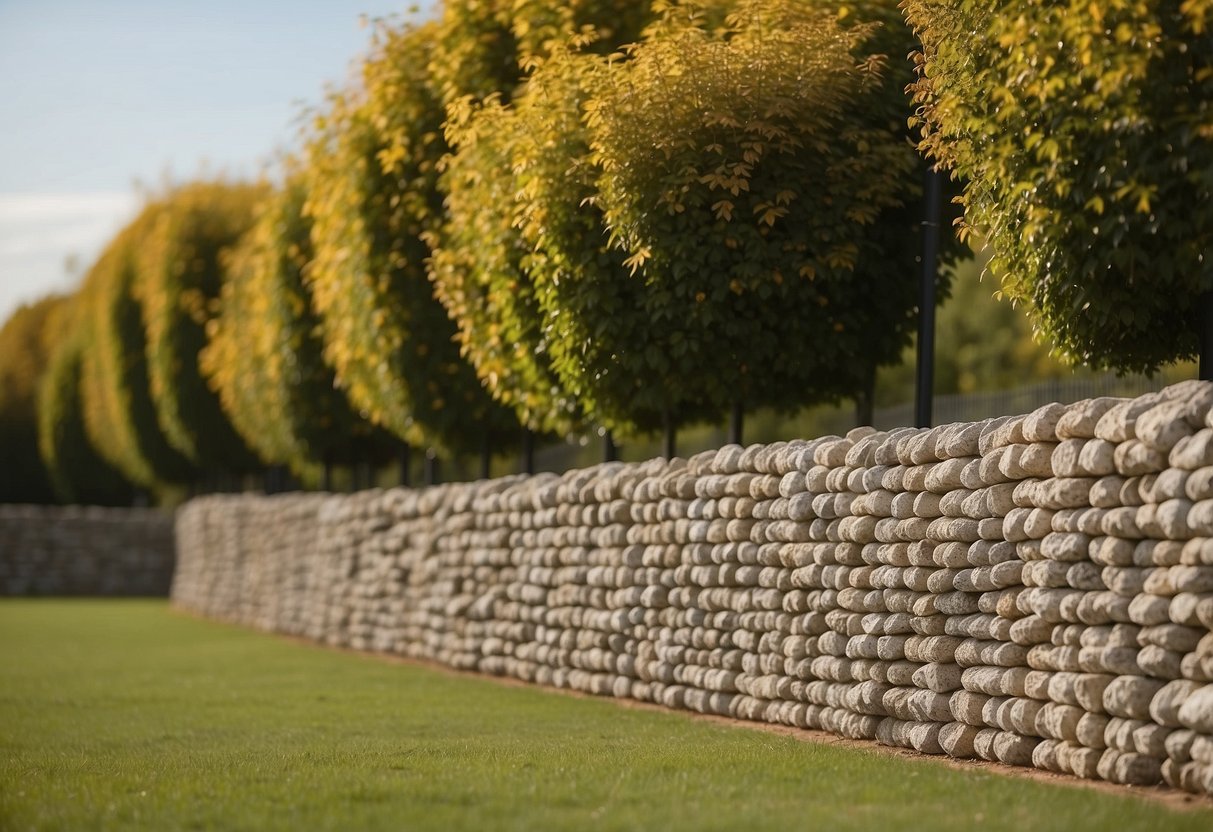Garden Windbreak Ideas: Creative Solutions for a Cozy Outdoor Space
Creating a cozy and protected garden space can be tricky when strong winds disrupt your peaceful retreat. How can you ensure your garden stays enjoyable even on breezy days? One effective solution is to incorporate garden windbreaks, which can shield your garden from the wind and add aesthetic value.

Whether you’re looking to use natural elements like trees and shrubs or structures like fences and screens, there are plenty of options to consider. By exploring various garden windbreak ideas, you can find the perfect balance between style and functionality for your outdoor sanctuary.
1) Willow Trees

Willow trees are a great choice for a garden windbreak because they grow quickly and provide dense foliage. They can reach up to 40 feet tall, offering excellent protection against strong winds.
You can plant Austree willows if you need a fast-growing option. They can grow up to 8 feet per year, making them ideal for quick windbreak solutions.
Plant your willow trees about 2-4 meters apart to create an effective wind barrier. This spacing allows them to grow properly while providing necessary coverage.
For more information on using willow trees for windbreaks, visit this guide.
2) Hedging Plants

Hedging plants are great for windbreaks because they create dense barriers that block wind effectively. You can use evergreen shrubs like Arborvitae and Cherry Laurel. These plants stay green all year, offering constant protection.
Some hedging plants, like Boxwood, are also excellent choices. They grow quickly and can be pruned to maintain a tidy appearance. Placing these shrubs close together ensures a strong windbreak that looks beautiful too.
3) Bamboo Screens

Bamboo screens are a great choice for creating a natural windbreak in your garden. Bamboo grows quickly and can form a dense barrier that blocks wind and adds privacy.
You can plant bamboo in a row or staggered for a fuller effect. Choose a type of bamboo that suits your area’s climate.
For a modern look, use containers for the bamboo. This also helps control its spread. Bamboo screens are not only functional but also add a beautiful, green element to your garden.
4) Shrub Borders

Shrub borders are a great way to create a windbreak in your garden. They provide shelter from strong winds while adding beauty.
You can use a variety of shrubs for this purpose. Some good choices include lilac, mugo pine, and Eastern red cedar.
These plants are sturdy and grow well in different climates, making them perfect for a windbreak. For more ideas, check out these eye-catching shrubs.
Boxwood and holly are also excellent options. Their dense foliage helps in blocking the wind effectively.
Adding layers of different heights can improve protection and create a natural look.
5) Gabion Walls

Gabion walls are a great way to create a natural-looking windbreak in your garden.
They are made from wire mesh baskets filled with stones, which adds both function and beauty to your space. You can even use different types of stones to match your garden’s style.
Gabion walls are sturdy, durable, and fireproof, making them a reliable choice for various weather conditions. They also help reduce wind while allowing air to flow, preventing your garden from feeling too enclosed.
For more creative gabion wall ideas, visit 25 Landscape Beautification Inspirations.
6) Picket Fences

Picket fences are a charming option for adding a windbreak to your garden. They provide some protection while still allowing airflow.
You can choose between wood and vinyl materials. Wood gives a classic look, while vinyl is low maintenance.
Consider adding a stone base to make the fence more stable and stylish in your yard.
For more ideas, visit Bob Vila’s picket fence ideas.
7) Fabric Windscreens

Fabric windscreens are a practical and stylish solution for your garden. They can block wind effectively and add a touch of color. You can find them in various designs and materials to match your garden’s look.
Fabric windscreens are easy to install. Most come with grommets or ties to attach to existing structures or stakes. They are also portable, so you can move them around as needed. For more ideas, check out Garden Windbreak Ideas on GardenProfy.
8) Living Walls

Living walls are a beautiful way to add both protection and greenery to your garden. They act as natural barriers against the wind, making your space more comfortable.
You can create living walls by planting climbing plants like ivy or clematis on trellises. This adds a decorative touch while serving a practical purpose.
Another option is to use ready-made vertical planters. These can hold a variety of plants and easily fit into small spaces.
9) Garden Trellises

Garden trellises are a great way to add both beauty and function to your outdoor space. They support climbing plants like ivy, clematis, and roses.
Trellises can be made of wood, metal, or wire. They help train plants to grow in a certain direction and create natural windbreaks. They also add a decorative touch to your garden.
Choose a style that matches your garden’s look. For more ideas, check out these garden windbreak ideas.
10) Stone Walls

Stone walls make great windbreaks for gardens. They are very strong and can handle tough weather. You can enjoy a classic look that blends naturally with the environment.
A low stone wall can be an excellent choice. It’s not only durable but also adds timeless charm to your garden.
Consider using curved walls. Curves not only look natural but also create a cozy feeling in your space, enhancing the overall aesthetic.
Benefits of Garden Windbreaks

Garden windbreaks play a crucial role in enhancing your garden’s health and appearance. They shield plants from harsh winds, improve the garden’s microclimate, and even help with pest and disease management.
Protecting Plants from Wind Damage
Wind can harm your plants in several ways. Strong winds may break stems, uproot young plants, and dry out the soil. By using garden windbreaks, you can reduce the impact of these elements. Natural windbreaks like trees and shrubs are quite effective. For instance, planting a row of evergreens on the windward side provides a sturdy barrier.
Artificial windbreaks can also be useful. Fences, trellises, and screens made from materials like wood, metal, or fabric can offer great protection. The key is to choose the right type according to your garden’s needs. Combining different types can give your garden maximum protection and aesthetic appeal.
Enhancing Garden Microclimate
Windbreaks not only protect your plants but also create a better growing environment. By blocking harsh winds, they help maintain a more stable temperature in your garden. This is especially important in areas with hot summers or cold winters.
For example, a well-placed windbreak can reduce energy costs by lowering the need for heating in winter and cooling in summer. You can also see a positive impact on your garden’s water usage. Less wind means less water evaporation, which can help you save on watering costs and keep your plants hydrated.
Pest and Disease Control
Windbreaks can play a role in managing pests and diseases in your garden. When winds are blocked, the chances of pests being carried into your garden by the wind decrease. Additionally, a less windy environment can make it harder for fungal spores to spread.
Natural windbreaks, such as hedges and shrubs, can also act as a habitat for beneficial insects and birds that prey on common garden pests. By creating a balanced ecosystem, you can reduce the need for chemical pesticides and promote healthier plant growth. This approach leads to a more sustainable and enjoyable gardening experience.
Types of Garden Windbreaks

Garden windbreaks come in various forms, each suited to different needs and preferences. Some options use natural elements, while others rely on built structures.
Natural Windbreaks
Natural windbreaks use plants and trees to block wind. Fast-growing shrubs like arborvitae, boxwood, and Indian Hawthorne are effective for this purpose. Evergreen trees are popular because they provide year-round protection.
Hedges and tree lines, also called shelterbelts or hedgerows, are planted perpendicular to the wind. They reduce wind speed and create a buffer zone. You can layer these for added protection, especially useful in rural areas. To see examples, check out these garden windbreak ideas.
Artificial Windbreaks
Artificial windbreaks include fences, screens, and trellises. Fence panels made of wood or composite materials are common choices. Arbours and pergolas with panels not only block wind but also add a decorative touch.
Slatted wooden screens are a versatile option, providing both wind protection and style. Decorative screen panels can enhance the look of your garden while reducing wind impact. For more inspiration, you can explore creative garden windbreak ideas.
Design Considerations for Windbreaks

Understanding several key factors can greatly enhance the effectiveness of your garden windbreak. Looking at wind direction and speed, placement and spacing, and the materials you use will help you design the best possible windbreak for your needs.
Wind Direction and Speed
It is essential to know the prevailing wind direction in your area. You can then position your windbreak to offer the best protection. Windbreaks are most effective when they block the wind before it reaches your garden. Use various types of plants and structures to cover different heights and gaps.
Wind speed also plays a role. Strong winds may need denser windbreaks made of closely planted trees or solid fences. For lighter breezes, you might opt for more spaced-out barriers. Test your chosen design by observing how the wind moves through your garden on different days.
Placement and Spacing
Correct placement and spacing can maximize your windbreak’s effectiveness. Place your windbreak perpendicular to the prevailing wind direction. Ensure you leave enough space between elements like trees or fence panels for air to flow without creating turbulence.
Key considerations include:
- Distance from sensitive plants: far enough to avoid shade, close enough to block wind.
- Multiple rows for multi-directional winds: add layers of barriers for extra protection.
- Height to distance ratio: taller windbreaks protect larger areas but need more space.
Choosing Materials
The materials you choose can affect both the look and function of your windbreak. You might use living materials like trees, shrubs, or tall grasses. Evergreen trees and dense shrubs can provide year-round protection.
Common choices include:
- Plants: Evergreen trees such as spruce, or shrubs like arborvitae.
- Structures: Fences, pergolas, or screens made of wood, metal, or synthetic materials.
Mixing different materials can give you both aesthetic appeal and effective protection. For example, combining a wooden fence with a row of dense shrubs can create a sturdy yet visually pleasing windbreak. Remember to choose materials that suit your garden’s specific conditions, such as soil type and climate.







